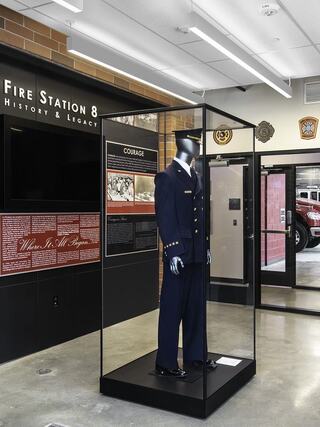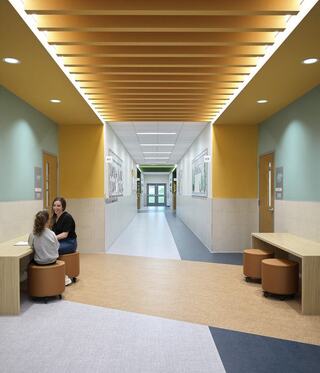
Integrating Transition and Breakout Spaces into Higher Education Architectural Design
Published: 7.9.25
Category: Design, Projects
Tags: Higher Education
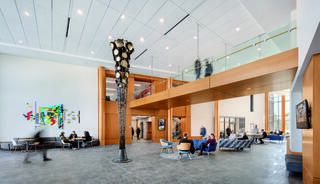
College campuses encompass a wide variety of primary teaching environments such as classrooms , lecture halls, seminar rooms and labs. Outside of these, students need a variety of other support spaces to complement their learning and engagement with the college community. These spaces are known by a variety of terms: breakout, gathering, connecting or transitional. Sometimes they are in an enclosed room, sometimes they are in an open hallway area. For example, a quiet corner may offer respite, allowing students to recharge and reset before moving to their next class. These spaces are crucial to creating a vibrant campus environment.
“These spaces help students make connections with one another, and are especially valuable for less outgoing students, and offer them a place to build community outside the classroom,” said Carol Stolt, Allied ASID, WELL AP, Design Principal, who leads interior design in FGMA’s higher education practice area.
These supporting spaces also are great hubs for students who commute, encouraging them to remain engaged on campus, interact and to be part of the larger college community. A key component of transition and breakout environments is comfort. Features like flexible seating options, WIFI and accessible power outlets provide efficient options for students looking to work or take a break between classes.
FGMA designers make intentional use of extra space by incorporating transitional or breakout areas in new and renovated higher education projects.
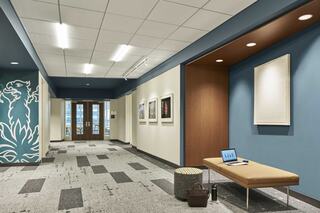
University of Chicago: This nook space in a large hallway offers a small refuge for students to take a break on the way from class to class, giving them space to socialize or study.

Wheaton College: This hallway at Wheaton College Armerding Center for Music and Arts, primarily used as a transitional space, also offers a variety of options for people to pause, gather and work in seating areas like the nook on the left, cafe height bar on right and cluster of seats in middle
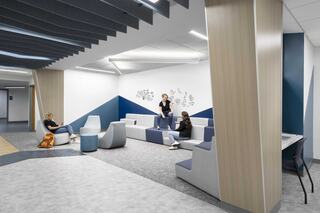
Kaskaskia College: This breakout space at KC is carved into the building corridors. The seating options are very relaxed and open into the hallway to create more of a flow into the learning environment.
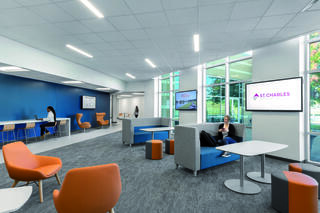
St. Charles Community College: The breakout space offers options for different activities: a large area for socializing with television and couches, as well as tables and counters for studying with flexible seating options. By offering both kinds of environments, students are more likely to collaborate and gather outside of class.
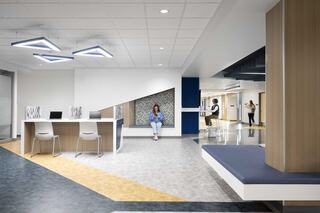
Kaskaskia College: This picture shows the variety of elements that contribute to comfortable supporting spaces. There is a cozy nook for studying or relaxing tucked into the wall, as well as a partitioned table with space to work separately. There is also bench seating around the column which separates the hallway from the space.
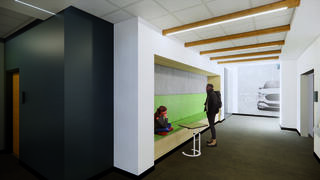
St. Louis Community College: This transition area fits right into the hallway wall across from classrooms, which offers classmates the opportunity to connect outside of class. Warm lighting provides a relaxing environment.
Breakout and transition spaces can often be crafted out of underutilized spaces that are adjacent to classrooms. This "kind" of space located outside a classroom offers a place where students can directly connect about a particular subject compared to spaces located in more common areas where students mix with the larger college community. They encourage students to be curious with each other and lead to stronger connections that ultimately have a positive effect on student success.
News & Insights
All Articles
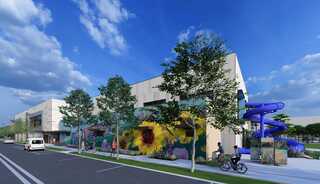
How City Planning, Zoning and Regulations Shape Successful Architecture Projects

